
Kód: 08142311
Nitrogen and Phosphorus Biomass-Kinetic Model for Chlorella Vulgaris in a Biofuel Production Scheme
Autor William M Rowley
Chlorella vulgaris was cultured in microbioreactors using Bold's Basal medium at varying nitrogen and phosphorus concentrations to define nitrogen and phosphorus utilization standards. Nutrient concentration was varied between 137 ... celý popis
- Jazyk:
 Angličtina
Angličtina - Vazba: Brožovaná
- Počet stran: 114
Nakladatelství: Biblioscholar, 2012
- Více informací o knize

Mohlo by se vám také líbit
-

Sailing on Broken Pieces
1236 Kč -

52 Selected Hymns for the Solo Performer-tuba version
700 Kč -

AN EAST ANGLIAN VILLAGE: OR, EPOCHS IN T
481 Kč -

A SERMON, ON THE SACRED OBLIGATIONS OF C
426 Kč -

ECONOMICS FOR HIGH SCHOOLS AND ACADEMIES
786 Kč -
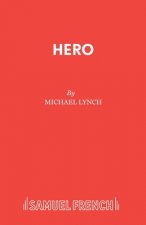
Hero
436 Kč -

Munster
249 Kč -

Handbook of Individual Family Constellations
515 Kč -

Songs from a Strange Land
410 Kč -

Mere Stories.
629 Kč -
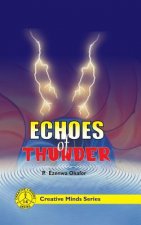
Echoes of Thunder
481 Kč -

Summation of Elohim
321 Kč -

Tales of the Astro Force
765 Kč -

Great American Swindle
1199 Kč -

Is Anybody Listening?
778 Kč -

Enemy Family
778 Kč -

Label, Inc. V. Commissioner of Food and Drug Administration U.S. Supreme Court Transcript of Record with Supporting Pleadings
679 Kč -

Julie Johnson, Petitioner, V. Clifford E. Halpin, Acting Director of the Department of Revenue of the U.S. Supreme Court Transcript of Record with Sup
634 Kč -

Ocean Outlaw
785 Kč -
![His Heritage. [A Novel.] His Heritage. [A Novel.]](https://media.libris.to/jacket/08006238t.jpg)
His Heritage. [A Novel.]
808 Kč -

Le serment des hommes rouges - Aventures d'un enfant de Paris
592 Kč
Dárkový poukaz: Radost zaručena
- Darujte poukaz v libovolné hodnotě a my se postaráme o zbytek.
- Poukaz se vztahuje na celou naši nabídku.
- Elektronický poukaz vytisknete z e-mailu a můžete ihned darovat.
- Platnost poukazu je 12 měsíců od data vystavení.
Více informací o knize Nitrogen and Phosphorus Biomass-Kinetic Model for Chlorella Vulgaris in a Biofuel Production Scheme
Nákupem získáte 165 bodů
 Anotace knihy
Anotace knihy
Chlorella vulgaris was cultured in microbioreactors using Bold's Basal medium at varying nitrogen and phosphorus concentrations to define nitrogen and phosphorus utilization standards. Nutrient concentration was varied between 137 mg/L to 7.33 mg/L NO3-N and between 55.2 mg/L to11.0 mg/L PO4-P in five test scenarios. All were grown under a constant photoperiod at 22±2°C and a mixture of 4 to 10% carbon dioxide/air. Maximum yield and growth rate occurred with the highest initial nitrogen and phosphorus concentrations. A statistically significant difference in biomass was found among all test levels at the end of the eight day growth period. Applying both Liebig's Law of the Minimum and the Blackman Limitation, it was determined that nitrogen was the limiting factor over the range of concentrations tested. Michaelis-Menten biokinetic coefficients (k), the reaction rate constant; the half saturation constant (Km); and Yx, the yield coefficients were also determined. To maximize C. vulgaris growth initial N concentration values should be 137 mg/L and should not be allowed to fall below 69 mg/L. No equivalent recommendation for P was determined. Yield coefficient calculations suggested that the N:P ratio should be at least 3:1. This study was conducted as a part of the ongoing advanced jet fuel project at the University of Dayton Research Institute and a part of the military objective to reduce the carbon footprint of jet fuel production.
 Parametry knihy
Parametry knihy
Zařazení knihy Knihy v angličtině Society & social sciences Education
1646 Kč
- Plný název: Nitrogen and Phosphorus Biomass-Kinetic Model for Chlorella Vulgaris in a Biofuel Production Scheme
- Autor: William M Rowley
- Jazyk:
 Angličtina
Angličtina - Vazba: Brožovaná
- Počet stran: 114
- EAN: 9781249592921
- ISBN: 9781249592921
- ID: 08142311
- Nakladatelství: Biblioscholar
- Hmotnost: 218 g
- Rozměry: 246 × 189 × 6 mm
- Datum vydání: 09. October 2012
Oblíbené z jiného soudku
-

Oxford IB Diploma Programme: IB Economics Course Book
1594 Kč -

OET Preparation
246 Kč -

Cambridge IGCSE (R) & O Level Complete Physics: Student Book Fourth Edition
929 Kč -

Business Partner B2 Workbook
462 Kč -

Business Partner B1 Workbook
434 Kč -

Imagine If...
306 Kč -

OET Reading Subtest Preparation
343 Kč -

Vol 2 Blackletter Lettering Adventures
635 Kč -

AS & A Level Maths For Dummies
455 Kč -

CompTIA Security+ Review Guide - Exam SY0-601
621 Kč -

Amazing Autistic Brain Cards
1000 Kč -

Hanbo Jutsu: Use of Hanbo, Cane and Walking Stick for Self Defense
284 Kč -

Embodied Teen
545 Kč -

Blue Book of Grammar and Punctuation: An Easy- to-Use Guide with Clear Rules, Real-World Examples , and Reproducible Quizzes, Twelfth Edition
393 Kč -

Positive Discipline Tools for Teachers
433 Kč -
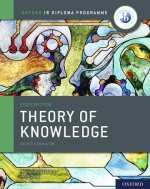
Oxford IB Diploma Programme: IB Theory of Knowledge Course Book
1466 Kč -
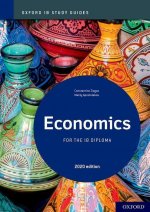
Oxford IB Study Guides: Economics for the IB Diploma
1120 Kč -

Speed and Accuracy: Division
208 Kč -

GCSE Spanish Exam Practice Workbook (includes Answers & Free Online Audio)
220 Kč -

KS3 Maths 10-Minute Weekly Workouts - Year 7
199 Kč -

Vertical Academy
919 Kč -

Grade 9-1 GCSE Maths AQA Revision Question Cards - Higher
242 Kč -

Human Landscapes from My Country
656 Kč -

Cambridge IGCSE (R) & O Level Complete Chemistry: Student Book Fourth Edition
992 Kč -

Oxford IB Diploma Programme: IB Course Preparation Mathematics Student Book
992 Kč -
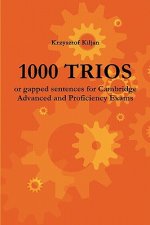
1000 TRIOS or gapped sentences for Cambridge Advanced and Proficiency Exams
608 Kč -

Business Partner B1+ Workbook
462 Kč -

(ISC) SSCP SG & SSCP Practice Test Kit, 3e
1745 Kč -
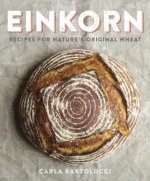
Einkorn
519 Kč -

Czech Verbs
954 Kč -

Motivation and Reinforcement
1161 Kč -

Pearson Edexcel International GCSE (9-1) English Language B Student Book
1328 Kč -

Read Write Inc. Phonics: Red Ditty Book Bag Books (Mixed Pack of 10)
1587 Kč -

Oxford International Primary Maths Second Edition: Practice Book 1
323 Kč -

Forensic Linguistics Articles
417 Kč -

Corrected Squares of The Book of Abramelin
14513 Kč -

Exam Prep for Microeconomics by Pindyck & Rubinfeld, 6th Ed.
1089 Kč -

KS3 Maths 10-Minute Weekly Workouts - Year 8
199 Kč -

Reading Mind - A Cognitive Approach to Understanding How the Mind Reads
556 Kč -

Ganzheitliche Sprachförderung
807 Kč -

Internet Protocol over Link-16
1646 Kč -

Effect of Registration Errors on Tracking in a Networked Radar System
1646 Kč -

Princeton Review SAT Premium Prep, 2021
1136 Kč -

CEH v11 Certified Ethical Hacker Study Guide + Practice Tests Set
1869 Kč -

10 Practice Tests for the SAT, 2021 Edition
841 Kč -
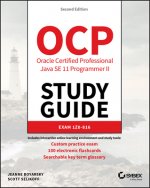
OCP Oracle Certified Professional Java SE 11 Programmer II Study Guide - Exam 1Z0-816 and Exam 1Z0-817
1336 Kč -

Prepared
876 Kč -

Powerful Teaching: Unleash the Science of Learning
665 Kč -

Physics for You
1249 Kč
Osobní odběr Praha, Brno a 12903 dalších
Copyright ©2008-24 nejlevnejsi-knihy.cz Všechna práva vyhrazenaSoukromíCookies



 Vrácení do měsíce
Vrácení do měsíce 571 999 099 (8-15.30h)
571 999 099 (8-15.30h)